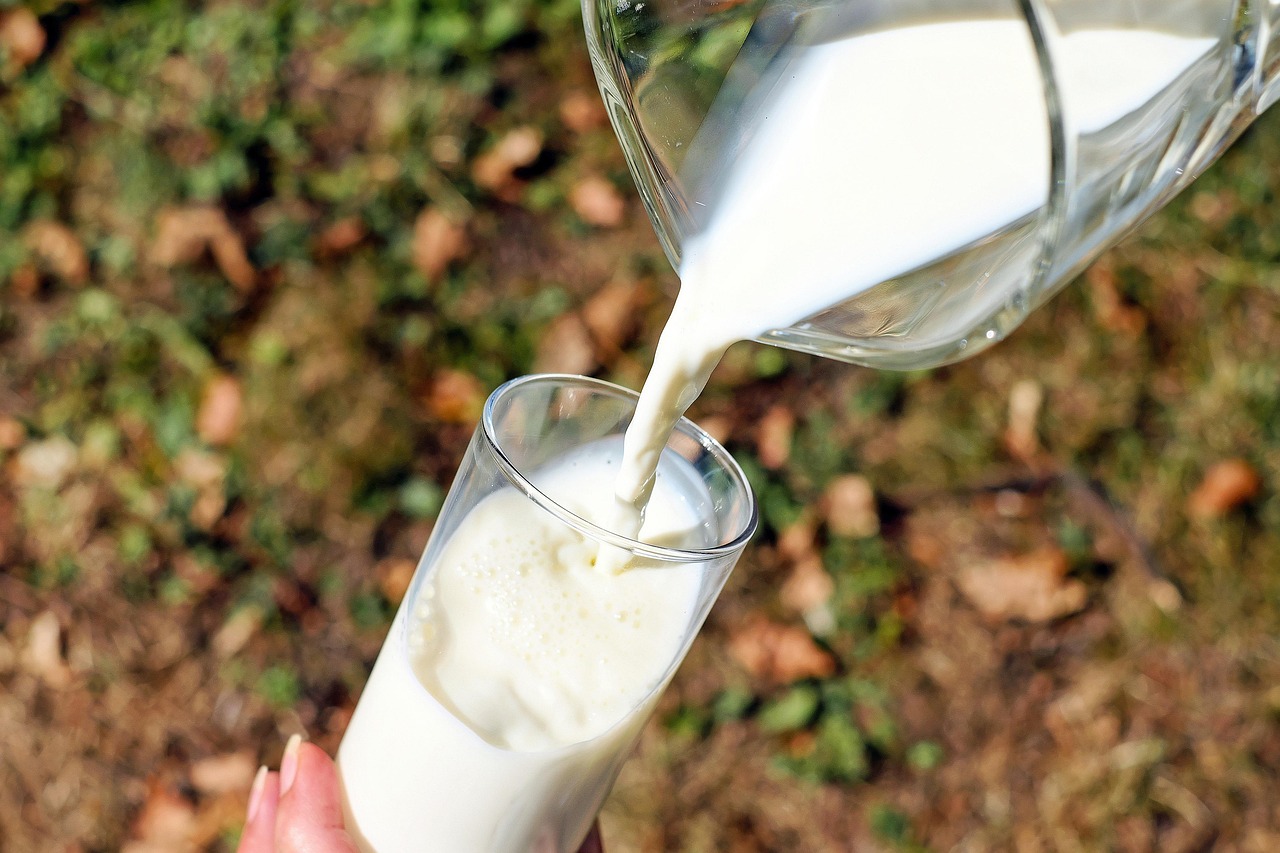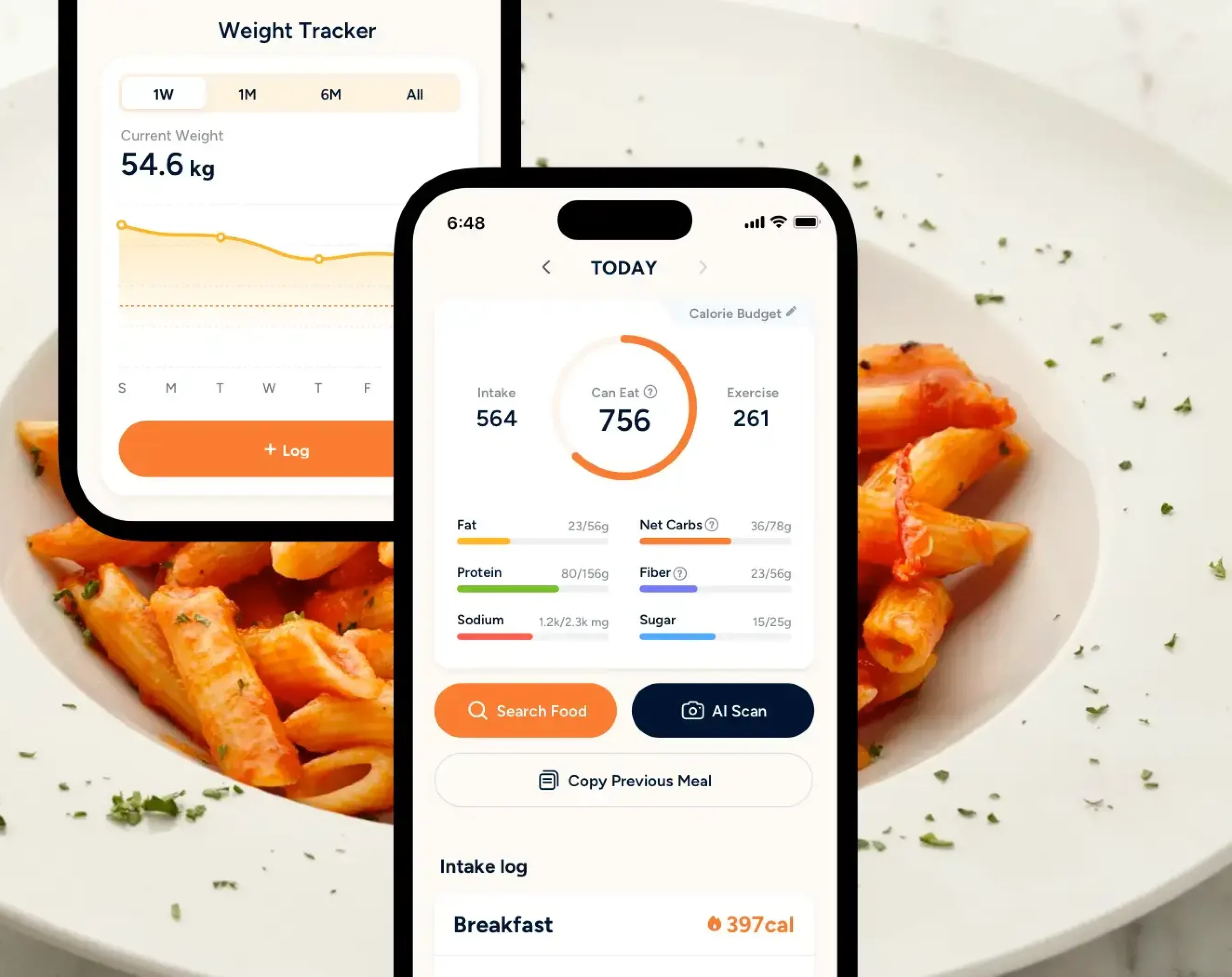Sushi originated hundreds of years ago in Southeast Asia as a means of preserving freshwater fish for consumption. Back in those days, the fish would be packed in fermented rice mixed with vinegar and salt to prevent spoilage. The rice would subsequently be discarded before eating. Today, sushi has evolved into a loved dish that combines both the vinegared rice and filling. But beyond that, is consuming sushi healthy for us?
In this article, we’ll explore its nutritional value, benefits, potential risks of consumption, and find out what some of the healthiest sushi options are.
Key Takeaways
- Traditional sushi made with fresh fish, vegetables, and seaweed provides high-quality protein, omega-3 fatty acids, fiber, and essential vitamins and minerals.
- Sushi with fried components, heavy sauces, cream cheese, or excessive rice can be high in calories, fat, sodium, and sugar.
- Rolls like cucumber rolls, avocado rolls, salmon rolls, salmon avocado rolls, and sashimi are lower in calories and nutrient-dense.
- Potential risks of eating sushi include mercury, allergies, and foodborne illness
- Moderation and portion control are key to a balanced diet. Limit high-calorie and high-sodium ingredients.
Is Sushi Healthy?
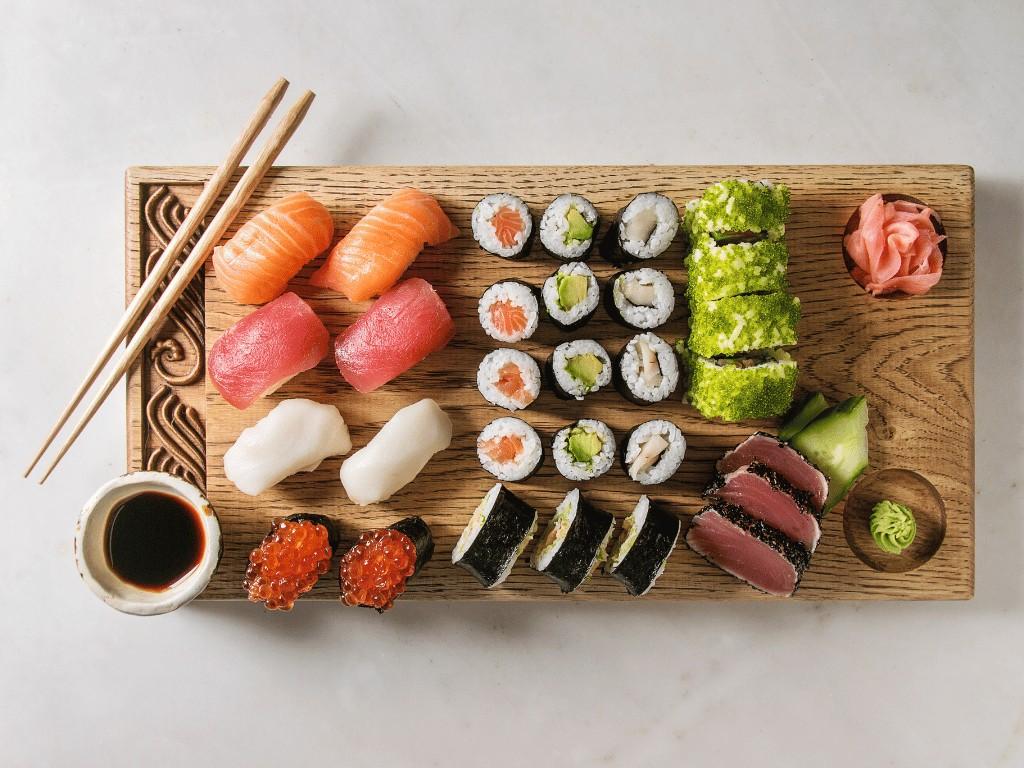
Unfortunately, the answer to the critical question of “Is sushi healthy?” isn’t that straightforward. This stems from the idea that traditional sushi, which was made with fresh fish and seaweed, can be a good choice for health-conscious individuals. Sushi’s main counterparts include salmon, tuna, and mackerel that contain beneficial omega-3 fatty acids and protein [1]. As well as Nori seaweed that contains essential nutrients such as vitamins A, C, and K, and several minerals. These minerals are potentially beneficial for our heart health and thyroid function [2].
However, in recent years, the “healthiness” of sushi is largely dependent on how it’s prepared and the ingredients used in each piece or roll, and with how popular it’s been, many chefs, restaurants and even home cooks have created their own versions of dish. This makes the variety of sushi and the types of ingredients used almost impossible to say whether it is “healthy” or not.
Despite seemingly only being made up of raw fish and rice, that common misconception cannot be further from the truth. In recent years, sushi has been made with an array of meats, seafood, and crustaceans, with even vegan options, and topped with mayonnaise, soya sauce, and other dressings with added fat, sugar, and sodium content.
Sushi Nutrition Facts
When trying to assess the true nutritional value of sushi, we need to evaluate all the different components that make up the dish.
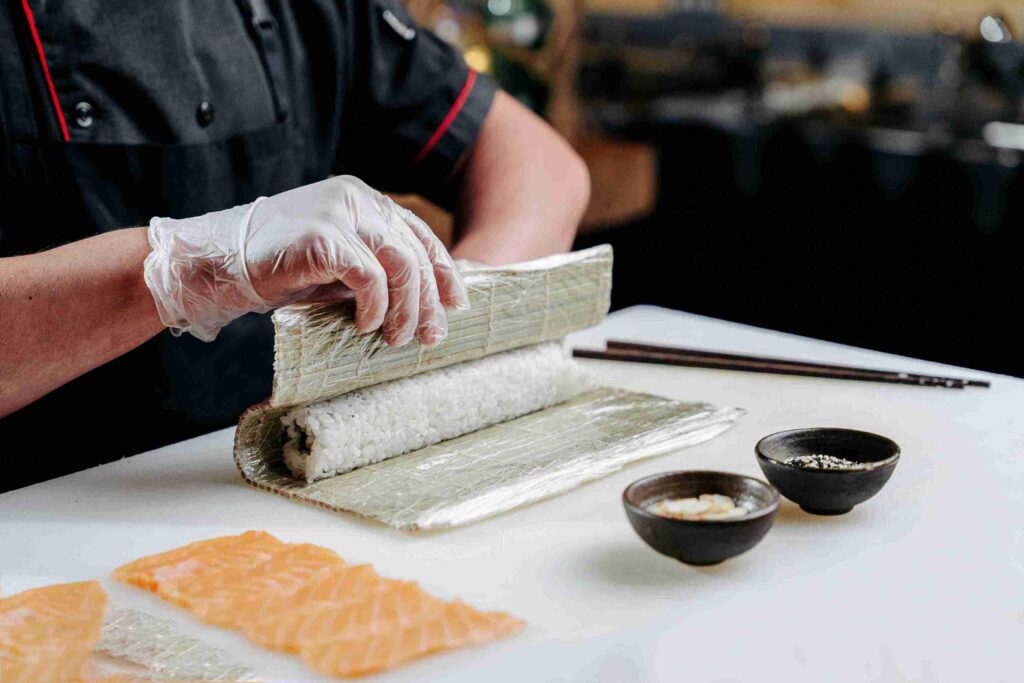
Here’s a general breakdown of the main components of sushi:
Rice
The way of seasoning sushi rice has not changed much from tradition, with it being typically seasoned with vinegar and sugar from mirin, a type of sweet rice wine. Occasionally, kombu or dashi made from dried kelp is added to the sushi rice for more flavour. A typical serving of this seasoned rice contains an estimated 20-40 grams of carbohydrates. It contains a higher calorie content than white rice due to the added vinegar, sugar, and any other seasonings.
Fish
Popular fish choices on sushi like salmon, tuna, and mackerel, contain an average of 3-8 grams of protein per piece. They are also rich in heart-healthy omega-3 fatty acids.
Seaweed
Nori or seaweed that is being used to wrap around the rice is not only low in calories, but it also contains many nutrients, including calcium, magnesium, phosphorus, iron, sodium, iodine, thiamine, and vitamins A, B, C, and K.
Vegetables
Adding vegetables such as cucumber, avocado, and carrots can be a good source of fiber and healthy fats.
Sauces and toppings
Soy sauce used as part of the sushi rice preparation tends to be high in sodium, with about 200-1000mg of sodium. Mayonnaise, miso, or tempura flakes also contribute significantly to the caloric, fat, and sugar content of the dish.
Is eating sushi good for weight loss?
Sushi can be a suitable food option when trying to lose weight, as it’s generally low in calories and low in fat. Maintaining a calorie deficit is one of the most important factors of weight loss, which can be achieved with a low-calorie diet with low-fat and low-carbohydrate content [3].
That being said, you need to be mindful of the type of sushi that you order and exercise portion control.

Weight Loss Has Never Been Easier
Get accurate nutrition info instantly. Keep track of your progress.
Download Eato For FreeThe Healthiest Sushi Rolls to Eat

The healthiest sushi to eat would be the ones that are made with fresh ingredients and free from heavy sauces, condiments, or fried components.
Here are some of the top healthy sushi roll choices:
- Salmon and Tuna Rolls: These fish are rich in omega-3 fatty acids, providing high-quality protein and fats without an excessive amount of calories.
- Cucumber Roll (Kappa Maki): Kappa maki rolls are one of the healthiest sushi choices as they are made with cucumber. It is low in calories, hydrating, and rich in fiber.
- Avocado Roll: Avocados contain healthy monounsaturated fats and fiber. The only downside is that they are much higher in calories than vegetable-only rolls.
- Rainbow Roll: Rainbow roll is also an excellent option if you are looking for high-protein sushi. It’s topped with a variety of fish types.
- Salmon Avocado Roll: This roll combines omega-3-rich salmon with heart-healthy avocado fats.
Is vegetarian sushi healthy to eat?
Vegetarian sushi can be a good choice to eat as they are not just low in calories, but it is also a rich source of fiber, vitamins, and minerals.
If you follow a vegetarian diet, you can opt for common options like cucumber roll, avocado roll, vegetable roll, or inari sushi. At the same time, bear in mind that vegetarian sushi rolls contain a lot less protein compared to meat-based sushi. You may want to consider pairing it with additional plant-based protein as a side.
Is sashimi healthy?
Sashimi is considered to be a healthy sushi choice as it consists purely of sliced fish without any carbohydrates or components. Depending on your choice of fish, each piece comes at only 20-50 calories a piece, which is considerably low and yet still rich in protein.
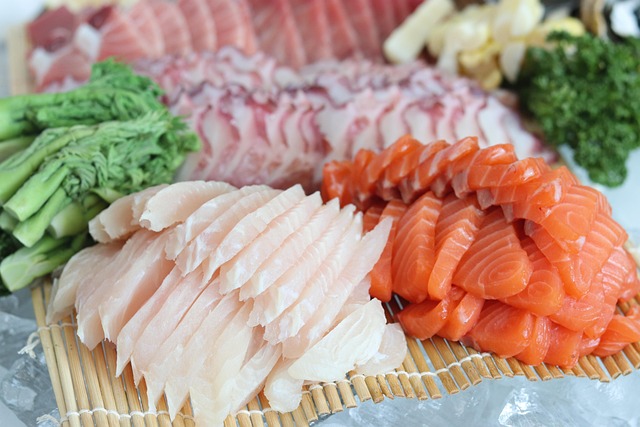
Sashimi is ideal for those following low-carb diets or looking to maximize protein intake while minimizing calories.
Low-Calorie Sushi Roll Options
For those watching their calorie intake, several sushi options provide satisfying meals without excessive calories.
The best low-calorie sushi choices include:
- Cucumber Roll: 120-150 calories per roll
- Tuna Roll: 180-200 calories per roll
- Salmon Roll: 200-250 calories per roll
- Avocado Roll: 150-200 calories per roll
- Yellowtail and Scallion Roll: 180-220 calories per roll
Pro Tip: For the lowest calories of your sushi, avoid choices that include tempura or any other fried components like fried chicken or katsu. Similarly, opt for brown rice whenever possible, and avoid any sauces that are heavy or dressings that may contain mayo.
Unhealthy Sushi Choices to Avoid
As mentioned, certain sushi preparations can affect the nutritional value of the sushi. Ingredients with high fat and high sodium content can make the sushi more calorie-dense and less healthy, which can happen easier than you realise.
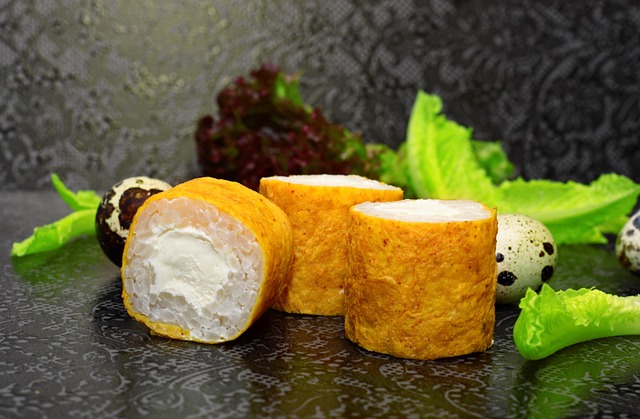
Generally, you should try to avoid these types:
- Tempura rolls: Tempura rolls are a type of sushi roll that is coated in a flour batter before being deep-fried. The deep-fried process would significantly increase the fat and calorie content, making it less healthy.
- Cream cheese rolls: Cream cheese, like most dairy products, is high in saturated fat and calories. They don’t provide much nutritional benefit, especially if you are trying to shed weight.
- Spicy tuna rolls: While tuna is packed with protein and omega-3 fatty acids, which is good for health, the roll itself is made with a spicy mayonnaise sauce that can add a lot of fat and calories.
- Rolls with excessive rice: Rice is high in carbohydrates and sugar, which may not be ideal if you are trying to maintain a calorie deficit or avoid sugar. Many sushi rolls contain a sizeable portion of rice, and it doesn’t help that many people tend to consume more than one roll in a single sitting.
- Rolls with heavy sauces: Rolls with a heavy amount of sauces like soy sauce, sweet sauce, or mayonnaise can easily add a few hundred calories to your sushi.
Are California rolls considered healthy?
California rolls may not be the healthiest option, but they are considered much healthier than some other sushi variations. A typical California roll usually contains sushi rice, seaweed, imitation crab (or real crab meat), avocado, and cucumber. It may also be covered with fish roe or sesame seeds on the outside.
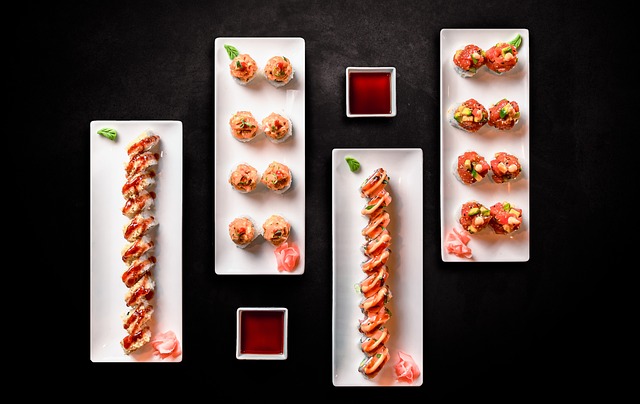
Here is an estimated nutrition count for a California roll (6-8 pieces):
- Calories: 250-300
- Protein: 8-12 grams
- Carbohydrates: 30-40 grams
- Fat: 8-12 grams
- Sodium: 400-600mg
The only reason why California rolls may not be as healthy as a salmon avocado roll, or a cucumber roll, is due to the imitation crab ingredient used. Imitation crab is low in protein and much higher in sodium than normal crab meat.
So, if you are a huge fan of eating California rolls, you want to take special note of the calories and sodium levels. It’s not bad to consume them, but you need to make sure that you do so in moderation. Too much of something is never good.

Smarter Nutrition Tracking
Track calories and over 100 other nutrients all in one place.
Download Eato For FreePotential Risks of Eating Sushi
However, just like most foods, despite their health benefits from the nutrients and low calorie count, there are unfortunately potential risks associated with consuming sushi.
a) Mercury content
Mercury content is a common toxic metal found in fish. Some fish, such as bluefin tuna, may have higher levels of mercury than other fish, which are commonly used in sushi. One study finds that people who had eaten fish sushi daily or almost every day had exceeded the safety thresholds of mercury intake of 0.1ug/kg/day [3].
Why is this dangerous? Because, consuming too much mercury can be harmful to the nervous system, especially for pregnant women and young children who may be more susceptible to the effects of mercury poisoning.
b) Food poisoning
In a study of sushi from 32 of 50 sushi restaurants in Seattle, it was found that salmon sushi was the most commonly infected (as much as 10% of pieces) with the nematode parasite [4].
Additionally, the risk of bacterial infection or food poisoning can increase, on top of the existing parasites in the fish, especially if the raw fish is not handled or stored properly.
Although parasites can be a common occurrence when eating raw fish, with most already dead due to freezing, some parasites can still be viable from incomplete freezing. A case report also described food poisoning caused by Kudoa hexapunctata, a parasite found in Pacific bluefin tuna, after consumption of sushi and sashimi [5].
c) Allergic reactions
Fish and shellfish are among the major food allergens globally. Studies indicate that 0.5-5% of people report adverse reactions to fish and shellfish. These reactions can range from mild hives to severe anaphylaxis [6].
Besides consuming fish, an allergy can also be triggered by the handling of fish or accidental inhalation of fish particles [7]. So, it’s important to avoid sushi made with fish and cross-contamination if you have a known allergy.
d) High sodium content
Many components of sushi meals contribute to high sodium intake. For example, soy sauce that is used as a dip contains a large amount of sodium on its own.
If you were to add additional seasoning or preserved ingredients to your sushi, it would also add to the sodium load. For people who are at risk of hypertension or cardiovascular disease, consuming a large amount of sodium can have negative implications on health. Therefore, it is important to consider a low sodium option when it comes to sushi.
How Much Sushi Can You Eat and How Often?
The biggest concern that people have about eating sushi is the mercury content, especially if you are going for sushi with raw fish. But what many people don’t know is that the amount of mercury in fish is dependent on the type of fish.
Larger fish carry a higher mercury risk compared to small fish.
The Final Takeaway: Eating Sushi Can Be Good For You
So, is sushi healthy? Traditional sushi is packed with protein, healthy fats, and good vitamins, which is ideal for a healthy, balanced diet. All in all, sushi can be a great inclusion if you are looking for a healthy and nutritious dish for your diet. Beyond that, the key to healthy weight management is still about practicing good portion control and prioritizing whole foods.
If you are unsure of what is going into your food daily or you are struggling with portion control, perhaps the Eato app can be a useful tool for you. With the Eato app, you can find nutritional information for your favorite foods by scanning your food or describing the ingredients listed, and it analyzes it for you. Try it now, only free for a limited time!

Weight Loss Has Never Been Easier
Get accurate nutrition info instantly. Keep track of your progress.
Download Eato For Free
